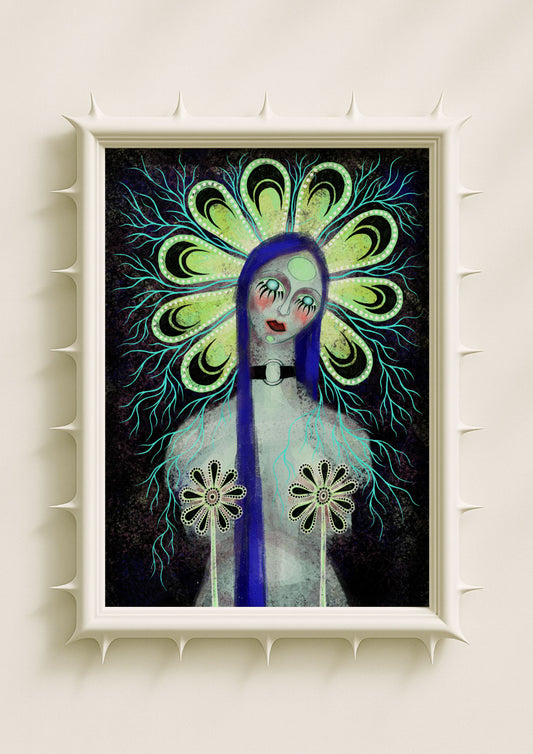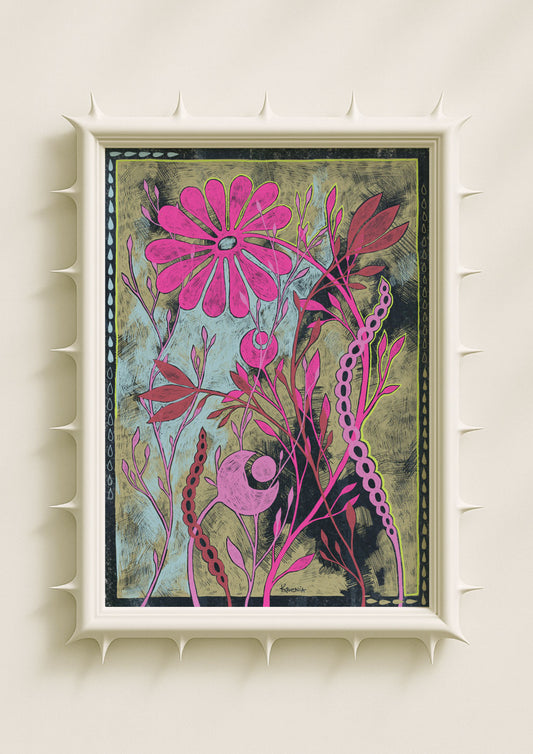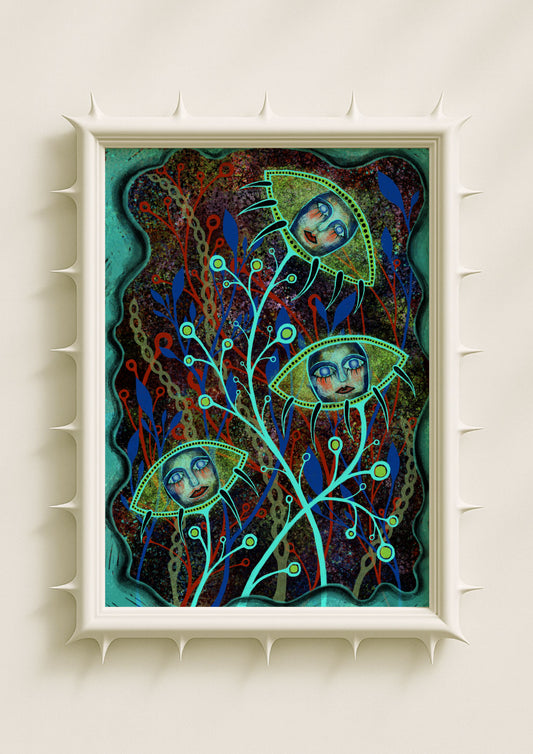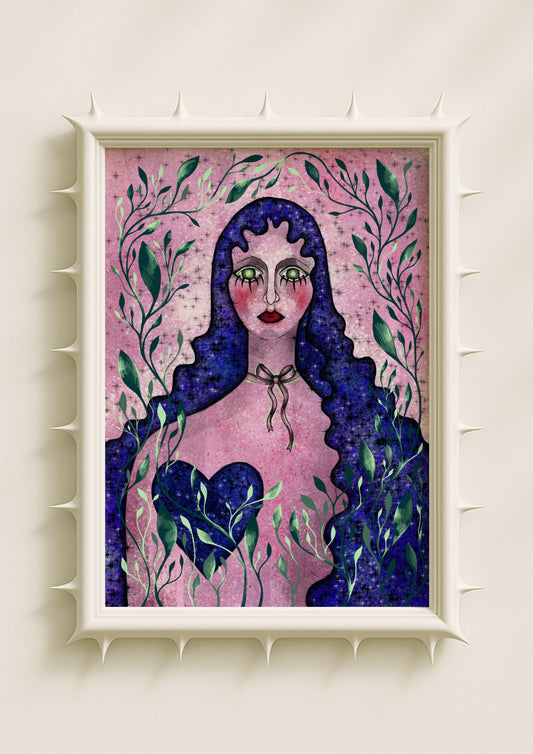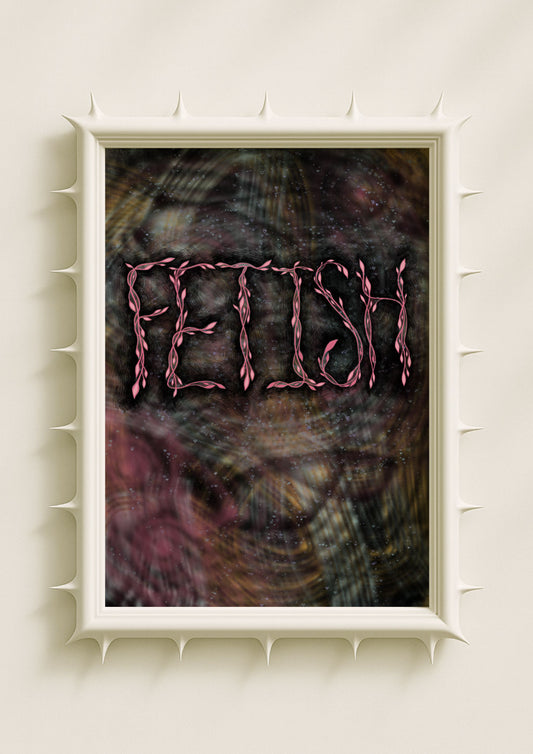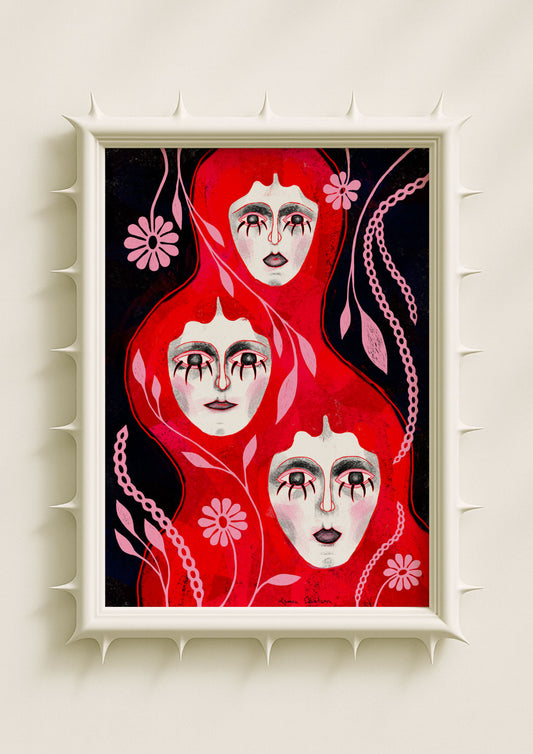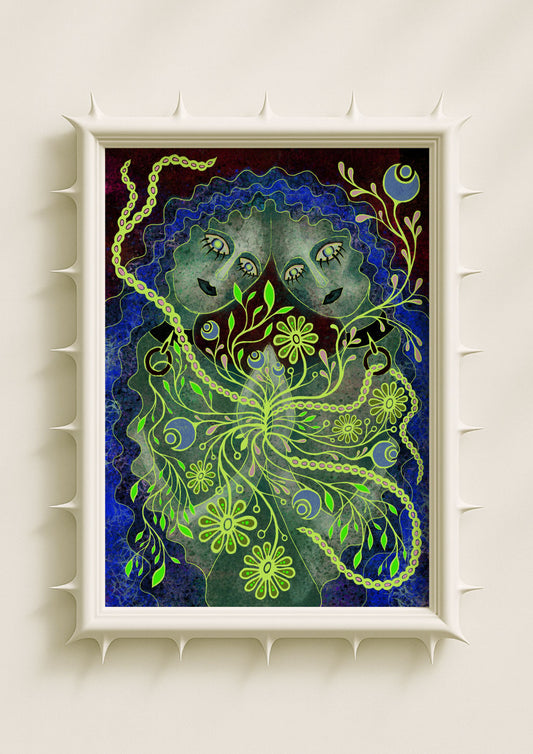Where Darkness Becomes Imagination
Dark fantasy posters live in the space where shadow meets dream. They are not simply “dark” and they are not simply “fantastical.” They are born from the tension between the two — light pressed against shadow, softness resting inside mystery. When I create dark fantasy pieces, I’m thinking about atmosphere first. Not fear, not gloom, but a kind of emotional dusk. A mood where the world feels slightly tilted, a little more symbolic, a little more awake. These posters bring that quiet tension into interior spaces, turning walls into small night-worlds that pulse with imagination.

Shadow as Emotional Texture
In dark fantasy, shadow does more than deepen the palette. It becomes a texture, a way for the artwork to breathe. Soft gradients of black and violet create depth like fog at the edge of a dream. Charcoal contours sharpen delicate faces. A muted background can feel like velvet, or a forest at night, or the inner space of a thought. When shadow becomes a tool of emotion rather than a tool of contrast, the poster carries a softness that feels strangely comforting. It’s darkness that welcomes you instead of pushing you away.
Surreal Figures that Live Between Worlds
The characters in dark fantasy posters rarely feel fully human — but they are not monsters either. They sit in that liminal space where humanity blends with something symbolic. A face elongated by emotion. Eyes too large, as if holding more memory than the body can carry. Botanical forms merging with hair, limbs or shadows. These surreal figures exist like fragments of myths we haven’t heard yet. When they appear on the wall, they change the emotional temperature of the room. They bring stillness, mystery, and a sense that something meaningful is happening just out of sight.

Botanical Darkness and Symbolic Flora
One of my favourite elements in dark fantasy is the botanical language. Flowers in these posters aren’t only decorative. They shape meaning. A dark bloom feels protective. A pale flower in a shadowed environment becomes a symbol of resilience. Stems and vines behave like veins, growing toward or away from the figure. These botanicals soften the darkness with life, while the darkness gives the flowers weight and depth. Together, they create a surreal ecosystem — an emotional landscape rather than a literal one.
Colour Palettes that Whisper Rather than Shout
Dark fantasy uses colour in a way that feels atmospheric, not decorative. Indigo, plum, forest green, charcoal, muted teal — these tones create a quiet undertow. They shape a mood that settles slowly into the room. Sometimes I add a single bright accent — a red petal, a soft peach cheek, a golden highlight — to create a small emotional spark. In interiors, these palettes behave like evening light. They calm the space while enriching it, adding complexity without noise.

Narrative Without Storytelling
Dark fantasy posters often feel like fragments of stories. Not full narratives — just moments suspended in visual language. A glance between two mirrored figures. A flower blooming from a shadow. A character caught in a symbolic stasis. These scenes don’t explain themselves, and they don’t need to. The ambiguity invites the viewer to feel rather than interpret. This is one of the reasons dark fantasy works so well in contemporary interiors: it leaves emotional space open. It fills the wall with atmosphere rather than instruction.
Why Darkness Feels So Contemporary
Modern interiors often lean toward minimalism: clean lines, pale colours, polished surfaces. Dark fantasy art introduces depth without disrupting that clarity. It adds emotional layers without crowding the room. A dark portrait softens a white wall. A surreal botanical poster brings a touch of mystery to a simple bedroom. A moody symmetrical composition adds sophistication to a modern hallway. Darkness acts like a counterbalance — it stabilises the visual energy of a space and makes it feel grounded.
A Visual Language Made of Mood
In the end, the visual language of dark fantasy posters is built from mood rather than narrative. It uses shadows as breath, colour as atmosphere, bodies as metaphors, and botanicals as emotional symbols. These works don’t demand attention, but they hold it. They don’t shout, but they resonate. And when they enter a home, they bring a quiet cinematic quality — a sense that the walls are not just surfaces, but part of a world with depth, mystery and imagination.
